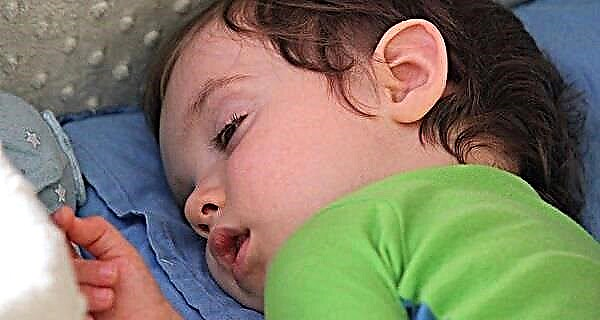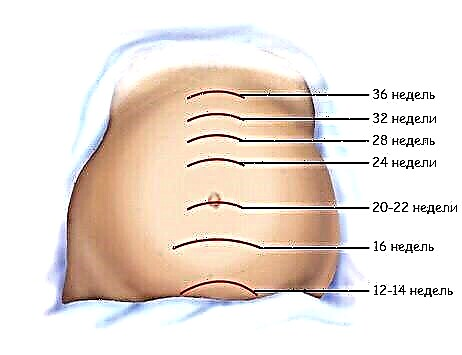
By the age of 2-2.5 years, most children erupt all twenty milk teeth. After that, the parents will have a quiet period when no changes occur in the child's oral cavity. But after a few years they begin to stagger and fall out in turn, making room for the indigenous people. How exactly does this process take place and what is important for parents to consider when changing teeth in children?
When teething in a child, the mucous membrane of the gums is damaged and aseptic (ie, "non-microbial") inflammation occurs, which causes fever, diarrhea, sleep disturbance and appetite for the baby. At the same time, as a result of damage to the gums, they become more vulnerable to infection and the occurrence of septic (ie "microbial") inflammation, which can complicate the already difficult period of teething. Conventional drugs for treating inflammation of the oral mucosa are not always convenient for children. You should choose a drug intended for use in children. For example, Holisal®... When applied topically, it has a triple effect of helping relieve pain and inflammation, and targeting viruses, fungi and bacteria. The adhesive gel base helps to retain the active substances on the mucous membrane, prolonging their action. It is important to be careful when using in children under one year old and consult a doctor beforehand.

How many changes from dairy to indigenous?
All milk teeth, of which there are twenty, normally fall out, so that permanent ones appear in their place, which are called for their strong long roots indigenous... Wherein More permanent teeth erupt than milk teeth, since babies have 2 more pairs of chewing teeth. As a result, in childhood, instead of 20 milk teeth, 28 permanent teeth erupt.
There should be 32 molars in total, but the last four may begin to be cut later, and in some people it does not appear at all, remaining in the form of primordia in the gums.

Scheme: which ones and at what age change to permanent ones?
- The beginning of the shift is noted in most children at the age of 5-6, when the child's first molars are cut. For their location in the dentition, they are called "sixth tooth". At the same time, from the age of 5, the resorption of the roots of the milk incisors begins, a little later - the roots of the lateral incisors, and at 6-7 years - the roots of the first molars. This is a lengthy process that takes 2 years on average.
- At 6-8 years of age, children experience a change in their central incisors. First, a pair falls out, located on the lower jaw, after which, on average, at 6-7 years old, permanent incisors appear in their place, which are distinguished by their large size and the presence of a wavy edge. A little later, the central incisors located on the upper jaw fall out. The average period of eruption of permanent teeth in their place is 7-8 years.
- Then comes the period of changing the lateral incisors. On average, they fall out at the age of 7-8 - first the upper, and then on the lower jaw. Then the lower pair of permanent lateral incisors begins to erupt, and at the age of 8-9, similar teeth appear on the upper jaw. Also, at the age of 7-8 years, the process of resorption of the roots of the second molars and canines begins, which lasts an average of 3 years.
- Fours change next... They are called the first molars, but after their loss, which is noted on average at 9-11 years of age, teeth "peck" in their place, which are called permanent first premolars. The first molars fall out first on the upper jaw, and then the turn of the lower teeth comes. However, the permanent teeth in their place are in no hurry to cut through, giving way to the canines.
At the age of 9-12, milk teeth fall out in children - first the upper ones, popularly called "eye teeth", and then the lower ones. Permanent canines begin to cut from the age of 9. The first such teeth appear on the lower jaw at 9-10 years old, and at the age of 10-11 years, the upper permanent canines erupt.
At the age of 10 to 12 years, the first premolars are cut at the same time (fourth permanent teeth) and the second molars (fifth milk teeth) fall out, after which the second premolars (fifth permanent teeth) are cut. The last four milk teeth fall out first on the lower jaw, and then on the upper. After that, only permanent teeth remain in the child's mouth. The lower permanent "fours" appear on average at 10-11 years, and in the period from 10 to 12 years, premolars (the fourth and fifth pairs of teeth) are cut on the upper jaw. At 11-12 years old, they are supplemented by a lower pair of second premolars.
The last in childhood (on average from 11 to 13 years) are the second molarscalled "sevens". At the age of 11-12, they erupt on the lower jaw, and at the age of 12-13, the upper "sevens" appear.
Third molars, also called "eights" or "wisdom teeth", appear later than all other teeth. This often occurs over the age of 17.

How old do they change?
Changing teeth in children lasts a long time, starting at 5-6 years old. In some children, it ends before adolescence, but in most cases by the age of 16-17, only 28 permanent teeth erupt... Wisdom teeth are erupted much later.
Are there any that don't change?
If we are talking about milk teeth, then they all change permanently. Some parents consider the chewing teeth, which are the last to erupt in the child ("fours" and "fives") permanent and think that they will not change. However, this is not the case, and the fourth and also the fifth milk tooth on each side of the jaw in all children should fall out, and in their place appear constants, which are called "premolars".

Do molars in children change?
Since permanent teeth are called molars, which erupt in children to replace milk ones, then normally they should not fall out. They remain with children for the rest of their lives.
Oral hygiene during the shift
While your child's teeth are changing, it is very important to thoroughly and regularly care for the oral cavity, since the enamel of new teeth is poorly mineralized and vulnerable to negative external influences.
The child should brush them twice a day with an age-appropriate toothbrush and the correct toothpaste. It is also advised to use special rinses and dental floss.

Tips
- In order for the teeth that erupt instead of milk teeth to be strong and healthy, it is important to pay attention to the child's diet during this period. The menu should contain enough foods that contain calcium and vitamin D. It is important to give your child solid food, such as apples or carrots, so that the teeth are cleaned and strengthened naturally while chewing.
- You should not worry that by the age of 5-6 years of age, gaps have appeared between milk teeth.... This is normal as the molars are larger and the baby's jaw grows to provide room for them. On the contrary, if there are no gaps by this age, the child should be taken to the dentist.
- Remember, tooth decay is the most common problem. Its occurrence is determined by various factors, among which hygiene and nutrition play an important role. Try to limit sweet foods in the child's menu and regularly go to the doctor with the child to detect this disease in the early stages, when it is not necessary to drill and fill the teeth.

- As a rule, permanent teeth are cut without severe painful sensations. If the child is worried about pain, you can use an anesthetic gel used for teething milk teeth, but it is best to go with your son or daughter to the doctor and make sure that the teething process is going well.
- If the tooth is loose, it can be pulled out at home. To do this, grasp it with a piece of sterile gauze, wiggle it to the sides and pull it down or up. If he doesn't respond, postpone the procedure or take your baby to the doctor.
- Since the enamel of newly erupted teeth is not strong enough, the first permanent teeth that appear are often affected by caries. "Sixes" are susceptible to this not only due to early eruption, but also due to the presence of fissures - depressions on the chewing surface, from which it is difficult to remove plaque. For protection, a procedure called fissure sealing is often used. If you want to do it for your child, take your child to the dentist as soon as the chewing surface of the sixth teeth is completely free of the gums.

- Remember that all periods of shedding and eruption are averaged. They may differ for each particular child, so with small deviations there is no reason to worry. If the loss of a tooth or the appearance of a permanent tooth in its place is very late, go to the dentist.
- One of the very common problems of the shift period is the curvature of the erupting permanent teeth. If their position is not correct, take the child for a consultation with an orthodontist. The use of special tools will help align them.

Watch the program of Dr. Komarovsky.
1. Instructions for the medical use of the medicine Cholisal®
There are contraindications. It is necessary to read the instructions or consult a specialist.



